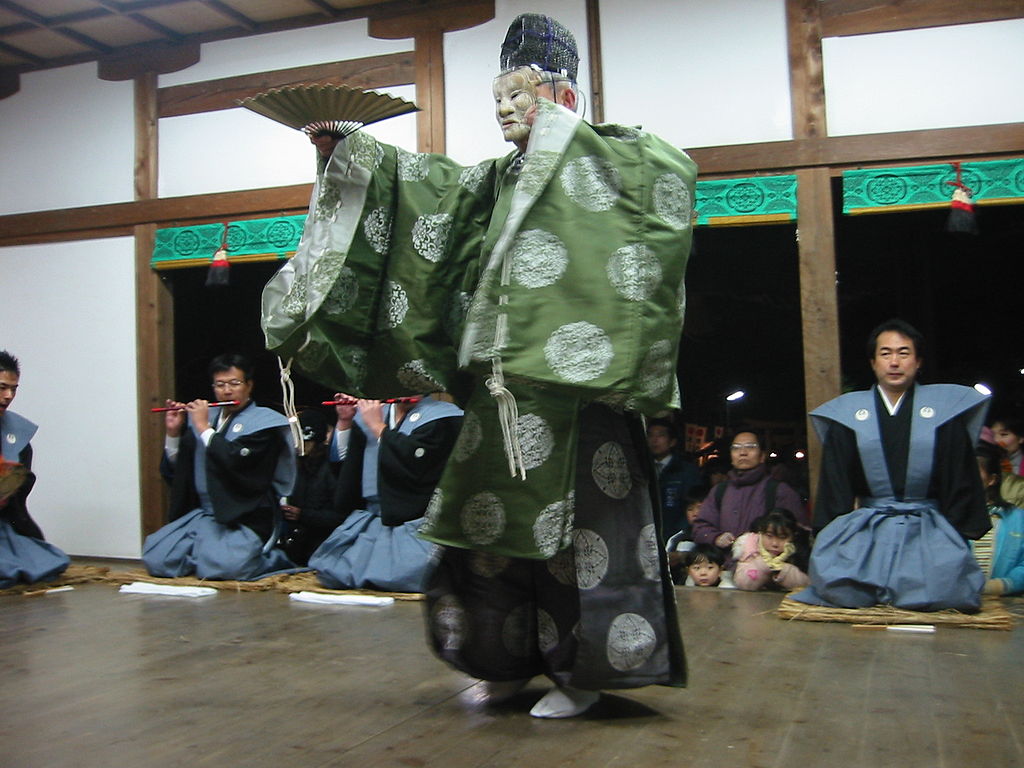Apr 24, 2018
Experience a Firelit Noh Performance at Nara’s Kofukuji Temple

Traditional Noh performances might occur at temples across Japan, but Nara’s Kofukuji Temple is the original home of the sacred event, and seeing a performance there is a truly unforgettable experience. Noh, which is derived from a Japanese word meaning “talent,” is a coveted musical drama performance that began in the 14th century and has been passed on ever since. In the beginning, most performances consisted of five Noh plays with comedic interludes, called kyōgen between. Modern Noh performances are a little less of a time commitment, though. These days you can enjoy the preserved art form in a condensed version with two Noh plays and one comedy play.
Each performance is quite the spectacle as the art form blends together the talent of dancers, musicians, costumes, and emotional story lines. One of the most vivid features of the plays is their use of elaborate traditional masks to help convey emotions. These masks, and the actors who wear them, provide an impressive depiction of the lives of ordinary Japanese people during the 12th-16th centuries. Though brushing up on your ancient Japanese language skills would be an added bonus for attending, the dramatic plotline is displayed simply enough to follow along, and the talented actors make up for any confusion.
It’d be hard to find a better setting for these ancient performances than on the lawn in front of the World Heritage Site of Kofukuji Temple. Embracing the temperate spring evening weather, Nara’s Takigi O-Noh theater is open-air. Noh theaters are traditionally built to allow for an intimate audience-performer relationship, and Nara’s temporary outdoor stage really highlights this. Takigi, which means “firewood”, refers to the ancient practice of delivering sacred wood to the theater in order to signify the beginning of a performance. Modern performances at Kofukuji carry this tradition to the present by lighting the stage with large bonfires. The firelit performance enhances the cozy, campfire-like atmosphere of the spring event.
If you wish to make this annual performance (held on the third week on Friday and Saturday of May). a part of your May schedule, make sure to arrive early. The seating is limited and on a first come, first served basis. Though the price tag might make tickets seem a bit unreasonable, seeing how much effort and skills go into each historical performance will undoubtedly leave you feeling grateful for the splurge. Tickets can be purchased early through the Nara City Tourist Information Center or at the temple before each performance.
Place: Kofukuji Temple Noborioji-cho, Nara City (5 minute walk from both JR & Kintetsu Nara Station)
When: Friday, May 18 and Saturday, May 19 in the evening
Price: 1-day ticket – ¥3,500, 2-day ticket – ¥5,000
Tel: 0742-22-7755
Reference website (English and Japanese): http://www.kohfukuji.com/english.html
By User:Demi~jawiki (Own work (transferred from Japanese Wikipedia)) [GFDL or CC-BY-SA-3.0], via Wikimedia Commons


About the author